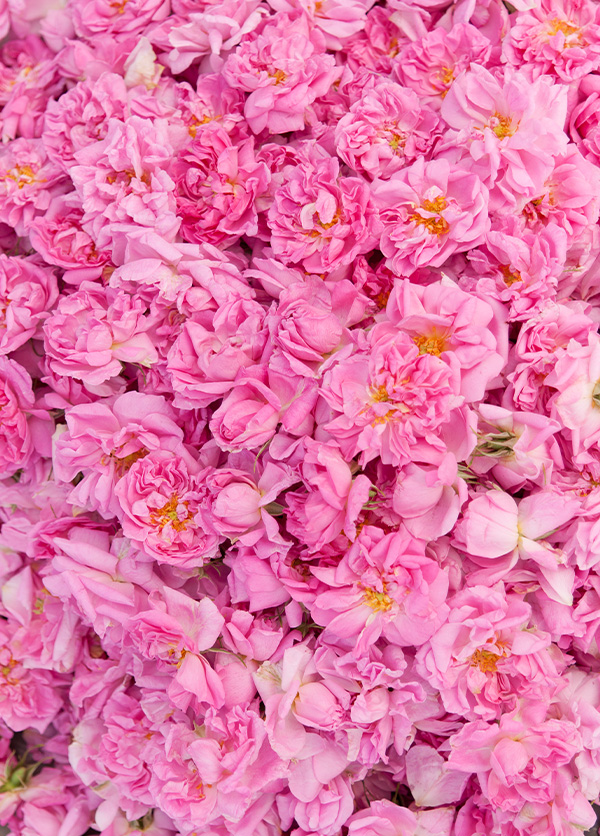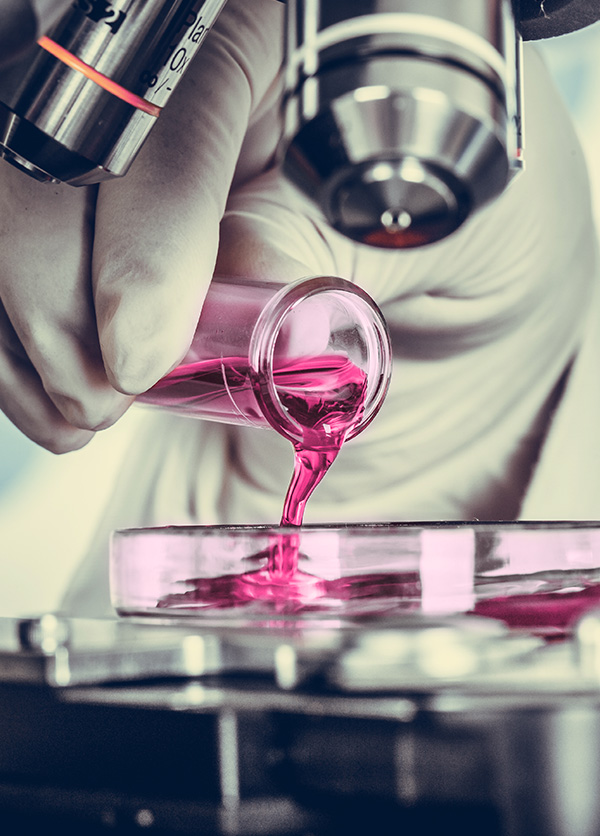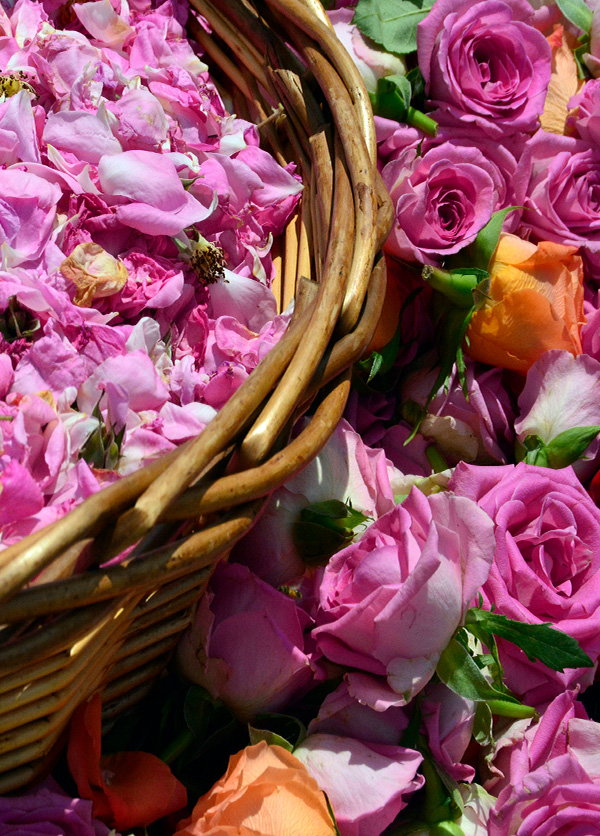Our Signature
The Damascena Rose

At the heart of the Valley of Roses, our botanical experts have selected the Damascena Rose as one of the key active ingredients of the range. Sumptuous and unequalled, this very special rose contains in its petals a precious natural treasure – the well-known rose oil, which is one of the secrets of Cogerie.
This exceptional flower with multiple vertues is one of the most sought-after varieties of roses for its therapeutic, cosmetic and olfactory properties. Among the 42,000 varieties of roses existing in the world, only Rose Damascene and Rose Centifolia are used in perfumery. The Rose Damascena is very generous, it contains the highest rate of essence in its petals, and capricious at the same time, because it requires very specific climatic conditions for its optimal development.
During its flowering period, the Damascena rose is covered with a very thin protective film of wax, thanks to this trick of nature, the Rose Oil contains less stearic acid (stearoptene) than common rose essences. This low stearoptene content is a guarantee of quality.


The Probiotics

Nature hides at the heart of its diversity a multitude of rich and beneficial natural ingredients for the skin. Based on in-depth scientific expertise, Cogérie has implemented probiotic technology to reinvent natural bioactive ingredients from living organisms. The brand puts at the heart of its concept several innovative actives resulting from probiotic cosmetic research. In the Probiotic Technology range, Cogérie’s scientific team have applied the benefits of nature by coating several patented ingredients that combine with the synergistic action of the rose to offer a powerful natural action.
Present during the yoghurt fermentation, Lactobacilli are the most widespread probiotics in the world. Delicately deactivated in our formulas these pure and powerful active ingredients, are part of the brand’s secrets. Hydrolysed yoghurt proteins help effectively fight against skin imperfections, while yogurt powder moisturizes and soothes. All products in the Probiotic Technology range contain several ingredients from probiotic research. These ingredients do not contain live bacteria and do not work on the surface microbiome. They contain only non-live elements from probiotics.
The Extraction process

The extraction of rose oil is another delicate moment. Using a complex cutting edge extraction process, the petals are treated immediately after being picked up.
Rose oil is obtained by using two techniques: the technique of distillation and by the technique of enfleurage of the petals subjected to strong steam in copper or steel vats several meters high. The air is saturated with rose flavour. Each tank is filled with petals and pure water. The condensed vapor is collected in large bottles. A thin layer of precious, pale yellow oil floats on the surface and this is very valuable. It is decanted, filtered and packaged. The oil is kept in glass containers, closed with a wax pad.


THE RITUAL OF ROSE HARVEST

Picking rose petals is a crucial process. Everything is a matter of know-how and tender care. The rose is very demanding, fragile and capricious. The picking is carried out only by hand, at sunrise time from 4 am. to 10 am, when the amount of oil in the rose is the highest. In the early morning around 4 am. when the temperature reaches its lowest point, the rose activates its natural mechanism of protection against frost and pumps its oil up into its fragile pedals to protect them. The petals are delicately picked flower by flower to preserve the precious volatile oil. This work lasts 20 days, once a year at the beginning of June. Harvesting requires safe and precise gestures that can only be acquired with training in know-how and experience. The process of rose picking is long and meticulous. Thanks to the freshness of the morning, the aroma of this rose blossoms. The essence is distilled a few hours after the harvest, because the petals cannot withstand heat, transport and light.
The Hidder Rose Valley

The Valley of Roses is the only region in the Balkans where you can cultivate the Damascena rose and produce its exceptional oil. It benefits from climatic conditions and exceptional soil quality. Air humidity, cloudy skies, as well as scanty, but frequent rains in spring, are especially favourable for the cultivation of the Damascena rose. These moderately continental climatic conditions prolong the flowering period and suppress the evaporation of the essence, which increases the yield at the time of distillation. The so called “cinnamon soil”, a mixture of sand, potting soil and gravel, typical of the Valley of Roses, makes it so perfect for rose growing
Rose producers in the Valley use an original and authentic method of land preparation, called “kesme”. The soil is cultivated throughout the year in order to maintain a suitable humidity level during the summer and to protect the roots during the winter. Horticulturists also know not to “force” their roses. It takes several years for the Damascena rose to start flowering and several more years for it to produce essence. Last secret of the Damascena rose: in order to preserve all the freshness of the flowers and the delicacy of their essence, the ritual of the harvest must be rigorously respected.

